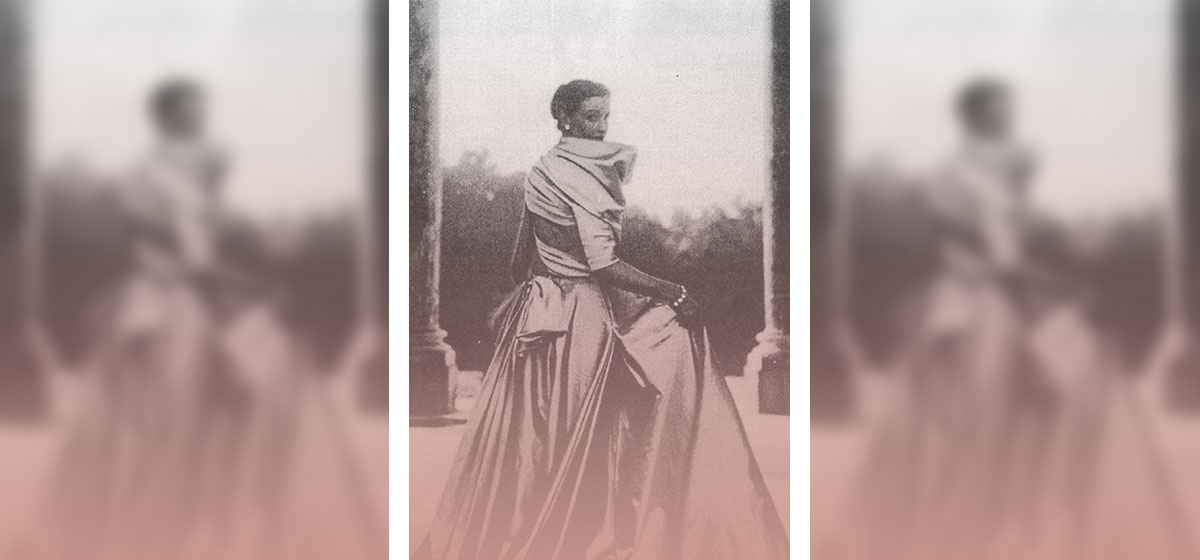
“What rage for fame attends both great and small. Better be damned than mentioned not at all!” So noted John Wolcott in the mid 1800s, and not much has changed since.
But today Wolcott might wonder what rage for society news has taken the nation by storm. One is hard pressed to open a newspaper or magazine without encountering smiling faces at some worthy event. That the society page is in the midst of a major resurgence should come as no surprise. Society itself is on the upswing.
As inherently social beings, we are naturally curious about each other. In the Middle Ages, professional gossips traveled from court to court with news of the land while troubadors sang tales of heroic deeds. With the invention of the printing press, it became much easier to follow the exploits of whoever was deemed to be interesting. For the subjects, there was some modicum of pleasure, a sense of achievement and pride in being singled out.
Both nosy and newsy, society pages matter not at all to some and mean the world to others. Most of us fall somewhere in the middle, recognizing that they chronicle the time in which we live in a unique and highly personal way. Who doesn’t want to be a part of history, regardless of how small our role or how fleeting our immortalization? The best society pages should mirror their times and the people who helped to shape them.
What, then, accounts for this current and most marked increase in society coverage? To get here we need to start there, during what Mark Twain dubbed the Gilded Age at the turn of the 20th century. The enormous fortunes created by the industrial revolution led to a new kind of wealth, one that was largely immigrant-driven and looked to Europe rather than to Puritan ancestors for role models. The 400 richest families in New York in the 1890s were a showy lot. They built mansions, bought the trappings of royal heritages including family silver, antiques and old painting, spent fortunes on dresses from Paris and wore them to balls designed to outdo the one they had attended the week before. They entertained lavishly because this was the most public way to display their wealth, and displaying their wealth certified their worth.
Centuries of monarchy and a society ruled by royal blood had created this foundation of insecurity. Now there was an aristocracy of money, with the pecking order determined by the size of the fortune. The more one spent, the more one implied their wealth was bottomless. It led on occasion to bankruptcy, as in the case of James Hazen Hyde. His ball for 600 in 1905 lasted until 7 a.m. and featured two orchestras, three dinners, the finest foods and champagnes available and a play written just for the evening. Hyde went broke shortly thereafter, but not before setting a standard that still ranks at the top of the Gilded Age.
This kind of extravagance naturally caught the attention of the press, which recorded every move of the super rich. The society page as we know it was born, and the readers’ appetite for it was enormous. But the democratization of society, once begun in earnest, was not to be stopped. While the wealthy joined the royals as fodder for news, competition emerged during the Jazz Age of the 1920s.
The advent of movies had brought about a new class of citizen — the movie star. More than 10,000 sobbing fans attended the funeral of Rudolph Valentino in 1926, one in a growing list of actors who created an insatiable public thirst for information. Their lives, their loves and their scandals paved the way for “celebrity” coverage. But also working to push society news aside were two decades of strife. Even the rich had enough sense to cool it during the Great Depression. In their absence, gangsters caught the imagination of the public, as did athletes such as Babe Ruth. Then came World War II, more reason to lay low unless the ball supported the Red Cross or other charities.
It was not until the 1950s that glamour returned to America, and on a much expanded level. The war had broken down some barriers between the classes as men from Harvard fought in the trenches with men from Hell’s Kitchen. Ladies groups sprang up like weeds as women celebrated their return to leisure. Improving oneself and helping others became worthy pastimes, and adopting the social mores of decades before was an affectation that spread with newfound zeal. Society pages now featured Mrs. John Doe serving tea or her daughter being presented at a tea dance. Debutante balls resumed, with money and social status all becoming factors. The decade marked a zenith of sorts in terms of press coverage and clout — it mattered who was photographed where, who chaired what ball, who wore what dress and who married what man.
Enter the ’60s, a divisive time that saw these traditions continue even as they were being challenged. The war in Vietnam, the sexual revolution and the women’s movement culminated during the ’70s into an outright social revolt. Women’s issues became politicized: Abortion rights, equal pay, equal opportunity. And if women were now equal, why did they need their own part of the paper? In newspaper after newspaper, the society pages began to shrivel up and die.
Then a funny thing happened. America got rich again. The 1980s became a decade of great affluence. Their desire to dress up and go out again happily coincided with government cutbacks to the arts, and the social conscience born of the ’70s led to widespread humanitarian instincts. The charity ball was the perfect venue for guilt-free excess, giving everyone a reason to don gorgeous gowns as they saved the world. And it gave society columns a valid reason to cover these events.
But much had changed since the heyday of the society column. Corporations were now major players as executives sought to increase their profiles. A meritocracy arose that championed inclusivity based on intelligence, achievement and contribution. Style mattered more, and fashion designers became stars. As the flashy money began to crash in the ‘90s, substance emerged as the new standard.
Today the arts, health and social services, medicine, law, sports, education and other alliances cluster around their own events. The fraternities and sororities in the African-American community vie with Waspy debutante balls for attention, hat luncheons and men’s smokers go head to head, auctions both live and silent dominate most events and award dinners, testimonials and roasts are the bread and butter of the fund-raising mix.
In 2005, the Pittsburgh Post-Gazette Seen column chronicled more than 400 events in the region. An impressive $72 million was raised from ticket sales, auctions, raffles and the hard work that goes into securing sponsorships. That’s a lot of money any way you count it — money that would not be going to the rescue of so many social agencies and venerable institutions had these events not happened.
The bottom line is that a happily symbiotic relationship is propelling the social current. People enjoy parties. That the result improves the quality of life in so many ways — funding a cure for heart disease, financing a museum exhibit, helping the homeless — is a pivotal point. As the government continues to cut back, the people are stepping forward in record amounts. And that’s something worth writing about. The blue-blood snobbery of the past has been replaced by a modern egalitarianism — today people have to earn their way onto the society pages.





